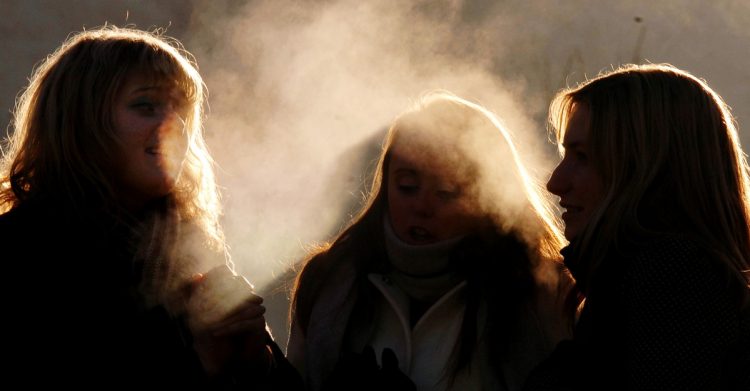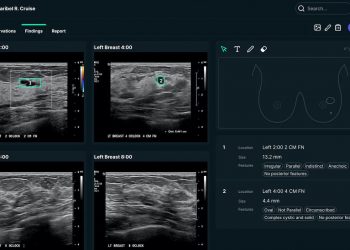In 2020, and again in 2021, the dreaded twindemic never came. The worry among experts was that a winter COVID surge layered on top of flu season—or even, in worst-case scenarios, a flu outbreak of pandemic proportions—would push already strained hospitals to the brink. Thankfully, we got lucky. Flu season simply didn’t materialize in 2020: The United States recorded only about 2,000 cases, a jaw-dropping 110 times fewer than it had the season prior. Similar trends held for other respiratory viruses. In 2021, cases were way up from 2020, but still way down from typical pre-pandemic years.
Now our luck seems finally to have run out. Flu season has only just begun, and already the U.S. has recorded an explosion of cases. A massive wave of RSV is hitting the country, along with smaller parallel surges in rhinovirus and enterovirus. The result of all this is what my colleague Katherine J. Wu has called “the worst pediatric-care crisis in decades.” Meanwhile, COVID cases and hospitalizations remain low around the country relative to earlier stages of the pandemic, but the coronavirus continues to kill about 350 Americans daily. The worry now is not a twindemic but a “tripledemic.”
What this means for you is that your body is likely to encounter multiple different virological foes this season—perhaps even at the same time. When you board a plane, or see a show, or eat out, you’re facing a more varied swirl of viruses than in recent years. How should you expect your body to cope?
Before delving into immunological arcana, it’s worth making one thing perfectly clear, at the risk of stating the obvious: Having a cold will not protect you from COVID. COVID will not protect you from the flu. Nor the flu from RSV. Different viruses penetrate the body’s defenses in different ways, and unfortunately, as impressive as our immune system is, it doesn’t have some universal ability to fend off all seasonal pathogens simply because it detects one. The same goes for vaccinations. A flu vaccine will not inoculate you against COVID, and a COVID vaccine will not inoculate you against flu; defending against both viruses requires both vaccines.
The immune system is famously complicated, however. As my colleague Ed Yong has written, immunology is where intuition goes to die. When people’s bodies face two different pathogens, whether simultaneously or in quick succession, all sorts of dynamics factor in. And more confusing still, these dynamics can differ drastically from one person to the next. Some people have conditions that leave them immunocompromised. Others must take immunosuppressive medications. Genetics come into play. Factors that no one yet understands come into play.
When a pathogen finds its way into your body, the initial stages of the response are part of what’s called the innate immune system—a constellation of cells, barriers such as our skin, and reflexes such as coughing that work in concert to ward off foreign invaders. The innate immune system is not particularly discerning. It distinguishes only between what is part of the body and what is not, then attacks the latter. Infection by one pathogen is unlikely to boost the innate immune system’s response to another in anything but the most marginal way. “You might be a little bit revved up, and your immune system might work a little bit faster, but there’s no specific protection,” Cindy Leifer, an immunologist at Cornell University, told me. “You’re still going to get the whole infection. It just might be a little less severe.”
These minor benefits, if you get them at all, will likely last only a week or two, she said. And even they are far from a given. In fact, infection with one pathogen can sometimes leave you more vulnerable to infection with another, Annabelle de St. Maurice, a pediatric-infectious-disease specialist at UCLA Health, told me. Flu, for example, can increase your risk of certain bacterial infections. COVID can increase your risk of certain fungal infections. At this point, it’s hard to say how COVID will interact with other respiratory viruses. Because we’ve seen so few cases of these other viruses over the past few years, we don’t have much of a sample from which to make inferences.
While the innate immune system hammers away, the body musters B cells and T cells, which, unlike the cells involved in the innate immune response, come in many varieties specialized to fight many different pathogens. These cells are part of the adaptive immune system, distinguished from the innate response both by this specificity and by its capacity for memory. Once they’ve cleared a pathogen, a fraction of the B and T cells called into action stick around, so that if the body encounters the same pathogen again, it can mobilize more swiftly and more robustly than it did the first time.
In certain cases, the adaptive immunity conferred by one pathogen can end up protecting us from another. This is called cross-reactive immunity. If two pathogens are sufficiently similar, the immune system might build protection against one by fighting the other. We sometimes see this with different strains of the flu. Or different COVID variants. This is why smallpox vaccines can inoculate against monkeypox. Early on in the pandemic, some scientists hypothesized that past infections with the common-cold coronaviruses so familiar to us all might provide a degree of protection against COVID. Some studies have offered modest support for this theory, but the real-world results—millions of deaths from COVID-19—suggest that whatever protection we had wasn’t terribly strong, Donna Farber, an immunologist at Columbia, told me.
How cross-reactivity plays out can differ drastically from person to person. The response relies on the adaptive immune system recognizing a part of pathogen A that pathogen B shares. It is this matching that allows the body to mount an immune response to pathogen B, despite having never encountered it before. If the body instead recognizes a part of pathogen A that pathogen B does not share, the body won’t mount a cross-reactive response. Researchers are trying to understand why these dynamics occur one way in one person and differently in another, but for the moment, Leifer told me, “I don’t think we really have a good handle on that.”
When the body happens to strike upon a near-perfect match between parts of two viruses that otherwise aren’t all that similar, she said, it’s “like winning the lottery.” Unless you like those odds, you probably shouldn’t bank on cross-reactive immunity bailing you out this flu season. Instead, the reality is that you’re more likely to get sick with multiple different things this winter than you were in either the last one or the one before. Be safe out there. Your immunological superpowers can only offer so much protection.
Source by www.theatlantic.com











